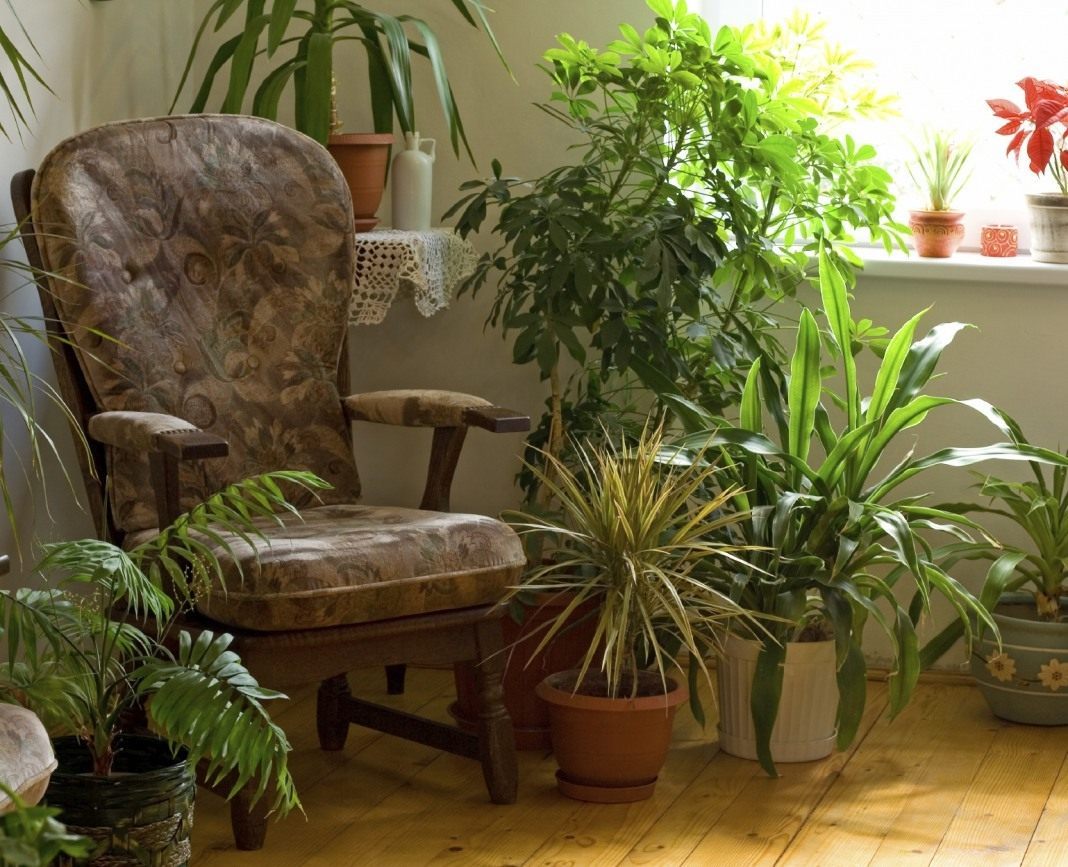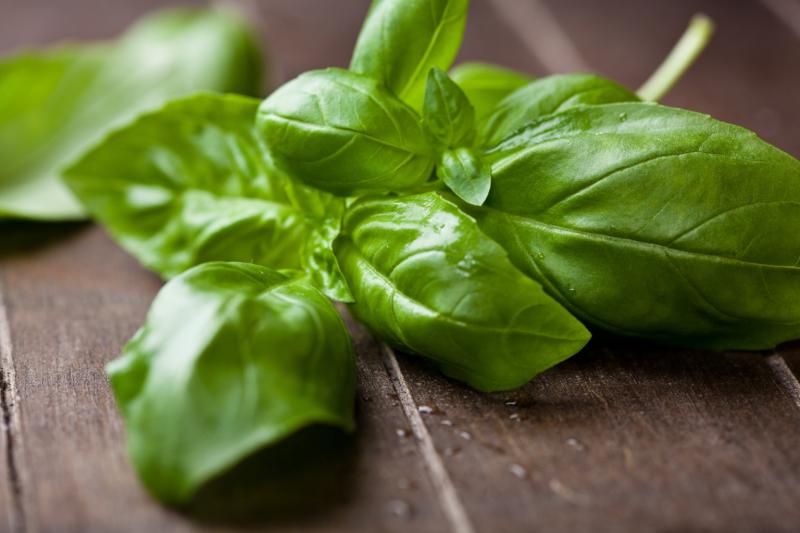Houseplants improve the air in the apartment, create a cozy, relaxing atmosphere, and enliven the interior. Each type of indoor flowers has its own shape of the pot. It all depends on the structure of the root system: for some it is weak, then a low one is needed, for others the root is long and the depth of the soil is needed. The second case will be discussed below.
Tradescantia
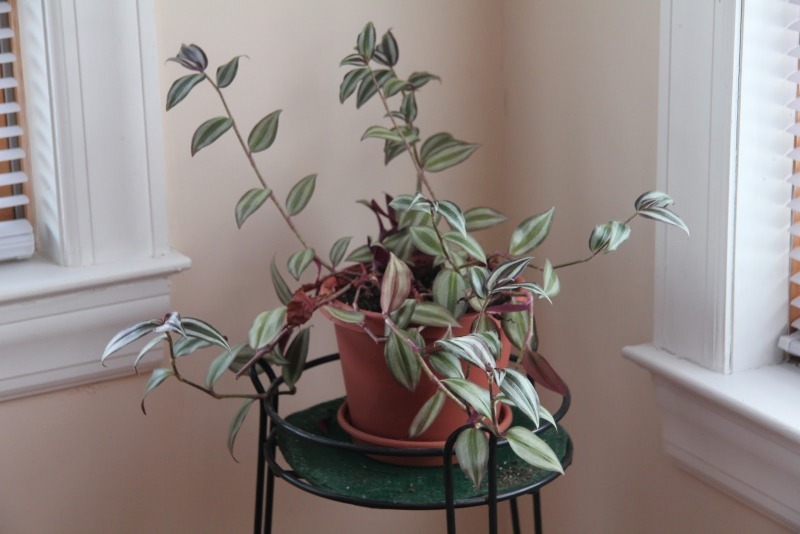
Ampel plant, a resident of the tropics and temperate latitudes of America, loved by flower growers for the lush crown of variegated white-green or pink-green leaves. The branches go up well, they are pinched to form a lush crown. Under the weight, the branches begin to hang down and you get a lush bush.
If you are placing Tradescantia on the floor without using a hanging planter, choose a tall pot for it. The hanging branches will reach the floor, which looks unaesthetic. And the roots are well developed, so for the development of Tradescantia you need a lot of nutrient soil and moisture. Water it immediately after the soil dries out from above, avoiding drought.
Palm trees
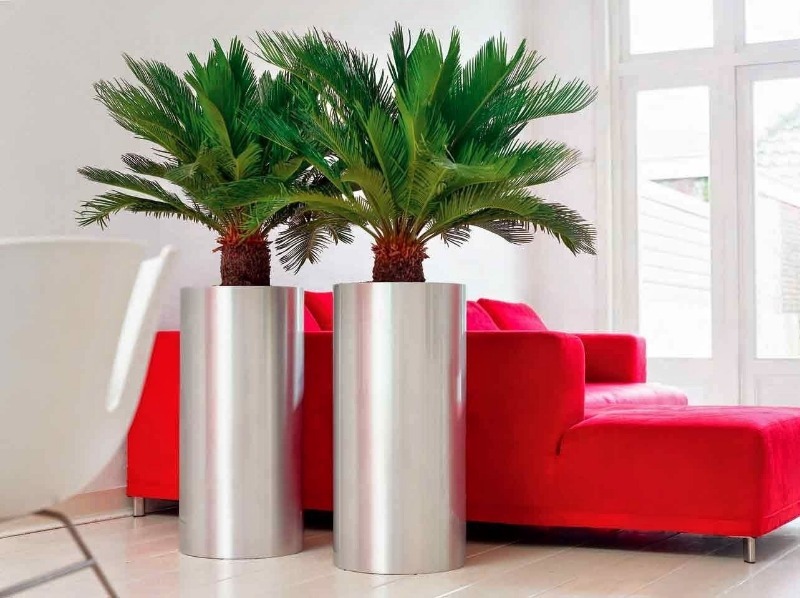
An extensive type of houseplants, with different shapes and sizes of leaves. A characteristic feature is a long stem and a lush crown on top. The homeland of the majority is the tropics of America, Africa, rocky soils near water bodies.
Three reasons why high containers are suitable for palms:
- The roots of the palm tree are long and develop rapidly to extract moisture from the soil layers.
- They like sandy soil, with good drainage so that water does not stagnate at the roots, so fill the lower quarter of the pot with expanded clay.
- Palm trees grow slowly and do not like replanting.
Some types of palm trees have roots rising from the ground, this is another reason for choosing a tall pot to cover them with moss or small expanded clay.
Palm trees are suitable for a single location, look elegant and add an exotic twist.
Dracaena
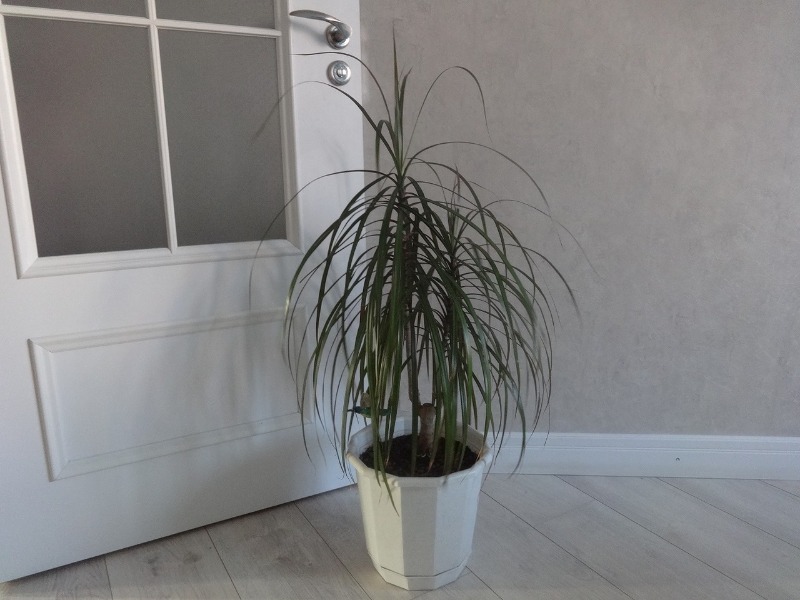
The homeland of the dracaena is South America, Central and East Africa. It looks like a palm tree, although it is not - a long stem and a lush crown of thin leaves, green or with a dark red border. Its appearance and unpretentiousness made it a popular indoor plant.
Dracaena requires only good illumination and moderate watering - closer to the window, but not on direct rays, and watering as the soil dries out. Dracaena's roots are superficial, but take a large container at once, since it grows quickly.
To emphasize the beauty of Dracaena, choose a high and narrow pot shape. Placing an adult flower in such a pot, you can visually increase the height of the room.
Bonsai
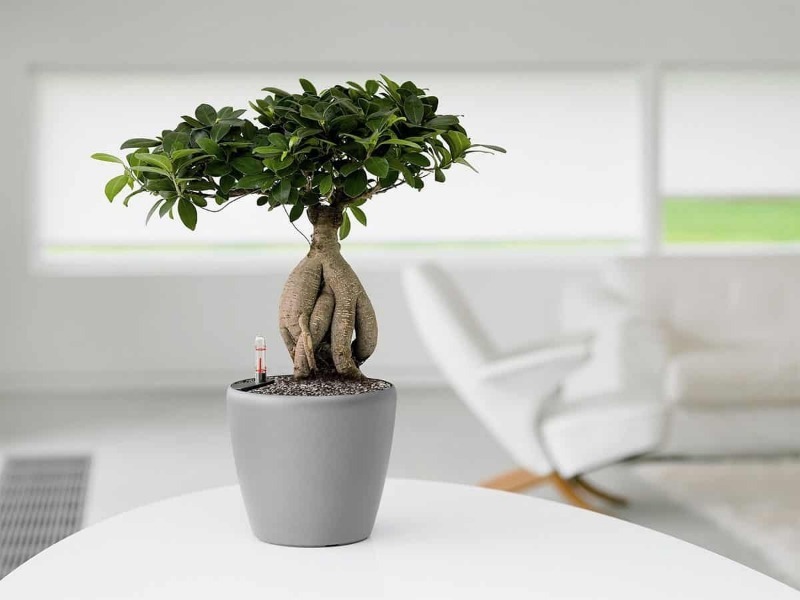
The culture of growing mini-trees appeared in Japan. It sometimes takes ten years to grow bonsai. For the living art of bonsai, different types are used - ficuses, rhododendrons, junipers and even trees - maple, elm.
The crown, branches, are formed in such a way that the plant resembles a tree in miniature - they are regularly pruned, intertwined, pinched. At the same time, the roots continue to grow, and a lot of soil is needed for the tree to receive nutrients and moisture. Bonsai are transplanted into small containers after they have achieved the desired shape.
Aglaonema
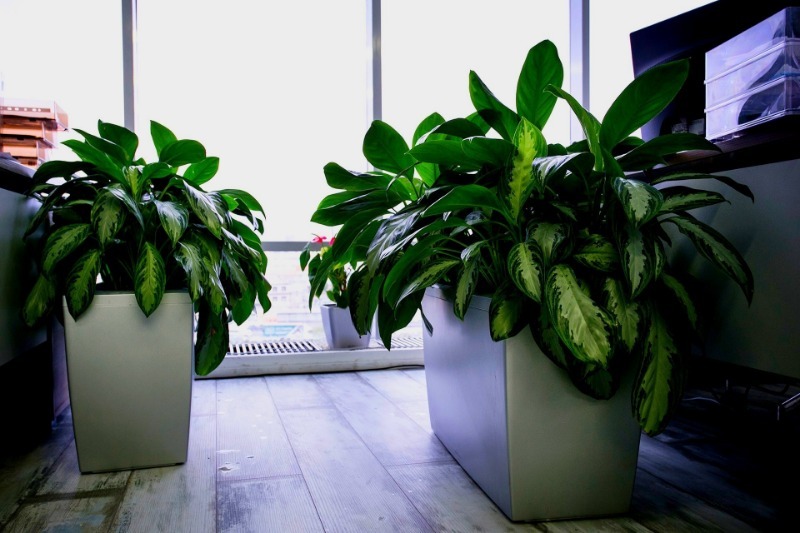
The homeland of Aglaonema is the tropical rainforests of Southeast Asia. The plant is a bush of long, wide variegated leaves that range from green to purple in color.A spectacular flower, which they like to decorate rooms with, using species with different colors and patterns.
As a rainforest dweller, Aglaonema requires a lot of moisture and nutrition from the soil, so choose a tall pot for it. Her root system is developed, fills the entire volume of soil, so as not to disturb with frequent transplantation, immediately plant in a large container.
Aglaonema, due to the shape of the crown, looks better in tall and narrow containers. In wide ones, it will look flattened. Therefore, the second reason for choosing this form is decorative.
Anthurium

A luxurious plant from Central and South America, it looks spectacular both in flowering and in decorative leafy form. The leaves are heart-shaped, with a matte or shiny surface. Flowers - white, red, but always in the form of a cob, wrapped in a blanket.
Young Anthurium is planted in a shallow container, and for an adult, pick up a tall cylindrical pot. This is to stimulate flowering. A wide flower will give out shoots rather than buds.
Ficus
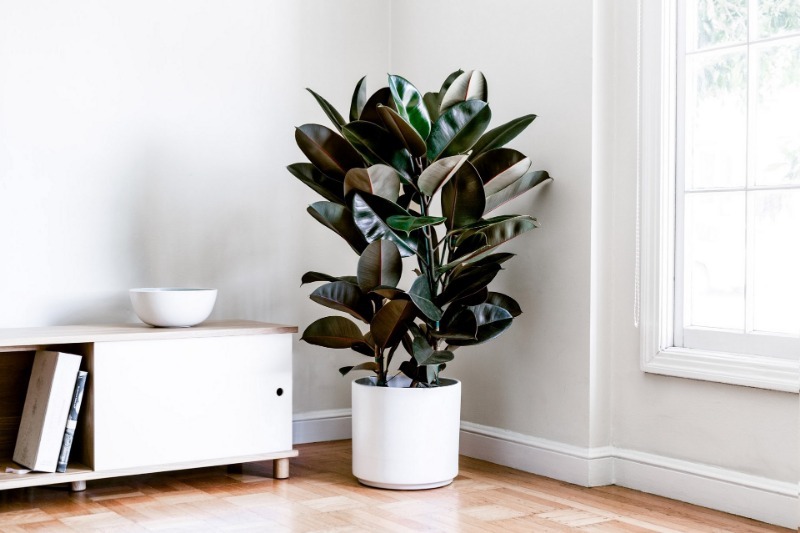
The most numerous type of domestic plants, including the popular ones - Elastica, lyre, Benjamin, dwarf.
Outwardly, they can be very different, but the care for them is the same, since the homeland is one climatic zone - the tropics and subtropics of different continents. Good illumination, watering as it dries - there are no special requirements for caring for ficuses.
Since indoor flowers are grown for decorative purposes, choose a pot in which they will look advantageous. Most ficuses are tall and they need adequate capacity.
The ficus also needs drainage, so fill the lower quarter with expanded clay. Also, the size of the pot can slow down the growth rate of the flower if you take more. Therefore, for adult ficuses, a cylindrical tall pot is better suited, in which the plant will gradually add upward.
Sheflera
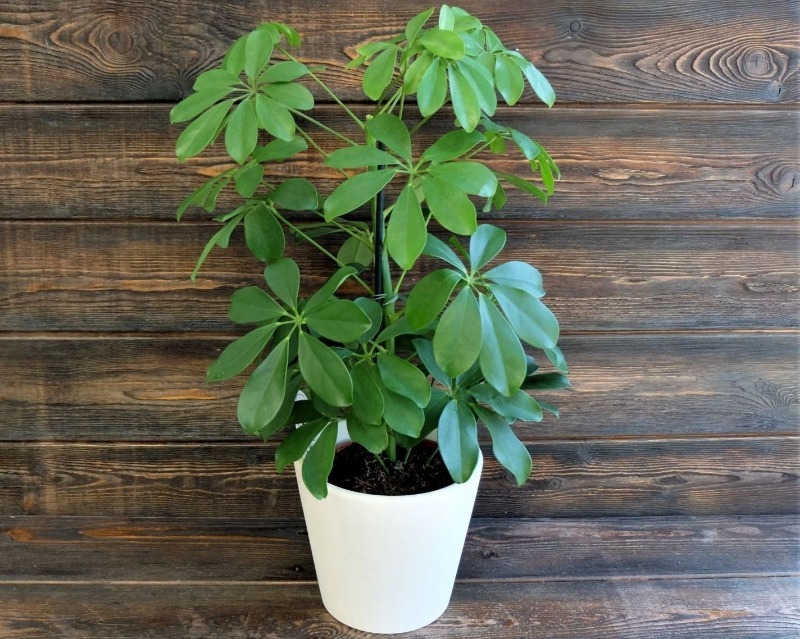
Shefler can be found in the tropics of any part of the planet. In nature, it grows to the size of a tree, decorative species are more compact, reaching 2 meters in height.
Florists love her for the shape of the leaves - when taken together, they look like an open palm or umbrella. They can be dark green or with yellow, white stripes. Grown for the chefler like ficuses - as a small upright tree or form the crown so that a lush bush is obtained.
In any case, this is a large plant and he needs a tall pot. Experienced flower growers advise to transplant Shefler into a much larger pot each time. A lush crown requires a lot of nutrition and moisture, so there should be a lot of soil.

